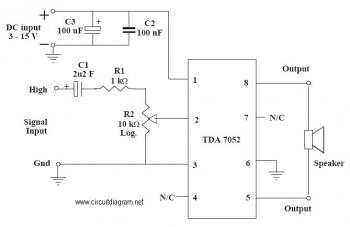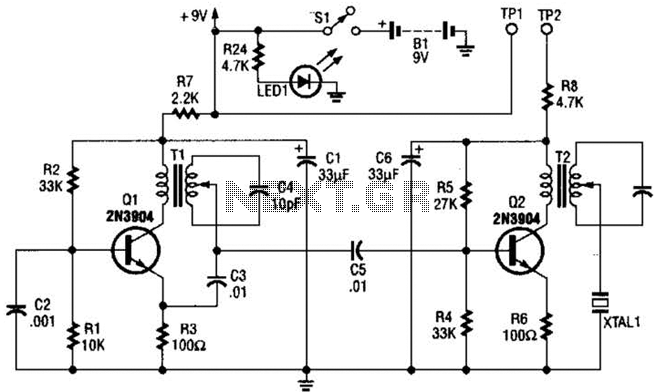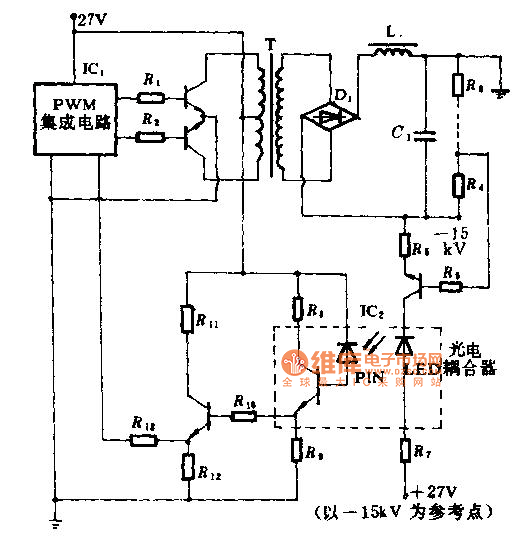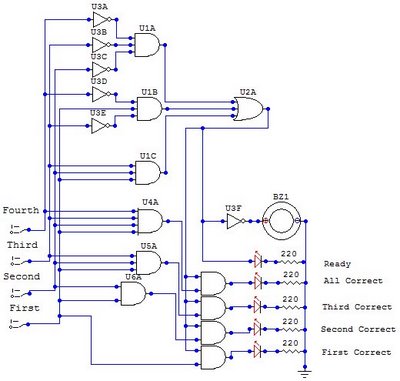
Crystal oscillator DTL integrated circuit
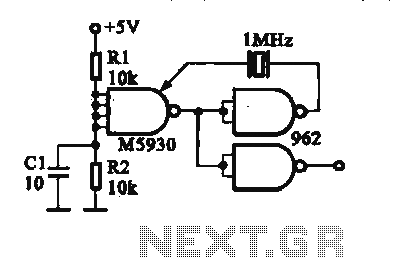
A crystal oscillator is implemented using a DTL (Diode-Transistor Logic) integrated circuit. The oscillation frequencies are 100 kHz and 1 MHz. The circuit consists of a gate circuit that generates a signal for the oscillator circuitry in DTL.
The crystal oscillator circuit operates by utilizing the piezoelectric properties of a quartz crystal, which provides a stable frequency reference. In this design, the DTL integrated circuit plays a crucial role in generating the oscillation signal. The DTL technology is known for its high-speed operation and low power consumption, making it suitable for applications requiring reliable frequency generation.
The circuit is typically configured with a feedback loop that connects the output of the gate circuit back to its input through the crystal. This feedback ensures that the oscillation is sustained at the desired frequency. The choice of oscillation frequencies, such as 100 kHz and 1 MHz, allows the oscillator to be used in various applications, including clock generation for digital circuits, frequency modulation, and signal processing tasks.
The gate circuit within the DTL integrated circuit consists of a combination of diodes and transistors that work together to create the necessary conditions for oscillation. The diodes provide the necessary biasing for the transistors, which amplify the signal and maintain the oscillation. The output signal can be further processed or used directly in the application, depending on the requirements.
Overall, this crystal oscillator design exemplifies the integration of DTL technology with crystal oscillation principles, resulting in a compact and efficient frequency generation solution.By a crystal oscillator b DTL integrated circuit constituted DTL is shown by the crystal oscillator integrated circuits, and the oscillation frequency is 100 kHz and 1 MHz. It is constituted by a gate circuit to provide a signal for the oscillator circuitry DTL.
The crystal oscillator circuit operates by utilizing the piezoelectric properties of a quartz crystal, which provides a stable frequency reference. In this design, the DTL integrated circuit plays a crucial role in generating the oscillation signal. The DTL technology is known for its high-speed operation and low power consumption, making it suitable for applications requiring reliable frequency generation.
The circuit is typically configured with a feedback loop that connects the output of the gate circuit back to its input through the crystal. This feedback ensures that the oscillation is sustained at the desired frequency. The choice of oscillation frequencies, such as 100 kHz and 1 MHz, allows the oscillator to be used in various applications, including clock generation for digital circuits, frequency modulation, and signal processing tasks.
The gate circuit within the DTL integrated circuit consists of a combination of diodes and transistors that work together to create the necessary conditions for oscillation. The diodes provide the necessary biasing for the transistors, which amplify the signal and maintain the oscillation. The output signal can be further processed or used directly in the application, depending on the requirements.
Overall, this crystal oscillator design exemplifies the integration of DTL technology with crystal oscillation principles, resulting in a compact and efficient frequency generation solution.By a crystal oscillator b DTL integrated circuit constituted DTL is shown by the crystal oscillator integrated circuits, and the oscillation frequency is 100 kHz and 1 MHz. It is constituted by a gate circuit to provide a signal for the oscillator circuitry DTL.
